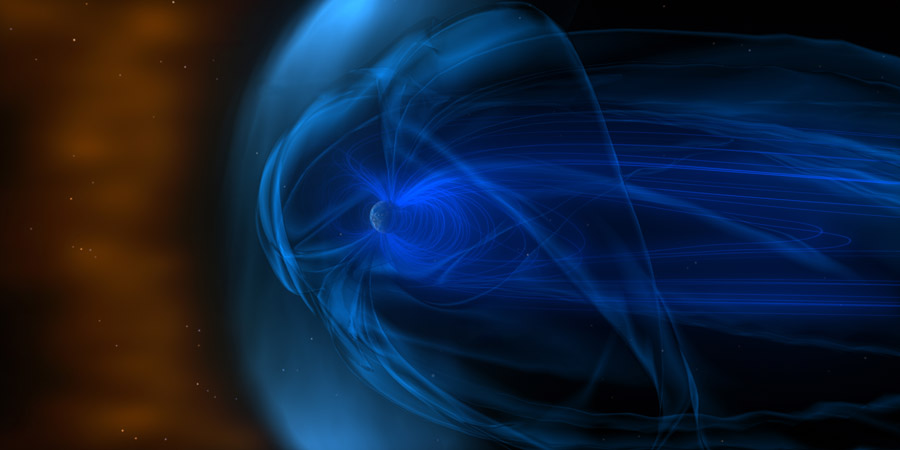Latest news updates Subscribe
Double impulsive X-class flares
sabato, d.C. giugno PM 15:48 UTC
Two X-class solar flares (X1.1 and X1.3) took place during the past 24 hours peaking at 22:03 UTC (31 May) and 08:48 UTC (1 June). These were impulsive events which originated from sunspot region 3697. Both of these events were not eruptive and did not launch coronal mass ejections.
X1.4 solar flare from sunspot region 3697
mercoledì, d.C. maggio PM 19:13 UTC
Ex-3664 which is now numbered as sunspot region 3697 is at it again this time with a long duration X1.4 solar flare (R3-strong) that peaked at 14:37 UTC.
X2.9 solar flare, Welcome back 3664?
lunedì, d.C. maggio PM 17:22 UTC
A major X2.9 solar flare (R3-strong) took place today peaking at 07:08 UTC. The flare came from a sunspot region just behind the south-east limb. This is likely the anticipated return of old sunspot region 3664 which was the source of many major X-class solar flares during its previous visit of the earth-facing solar disk and an extreme G5 geomagnetic storm which was the first of its kind in 21 years.
Let's compare! Halloween 2003 VS May 2024 Solar Storms!
venerdì, d.C. maggio PM 18:33 UTC
Today we have a really special news item for you! We have a guest post made by Christian Harris from Space Weather Trackers. Christian is a friend of the website an has made very well received guest posts before. He has some serious big brain knowledge about everything space weather related. I am sure many of you have heard of him before. He is here to shed some light on the Extreme G5 geomagnetic storm of last weekend and the famous Halloween 2003 solar storms. Please read his article below and gain some fascinating insights on two of the strongest solar storms in modern times. It is well worth the read! If you are interested in Christian's work be sure to follow him on Facebook and follow his Space Weather Trackers Facebook page. Christian, the stage is yours:
Coronal mass ejection impact, New website feature!
venerdì, d.C. maggio PM 17:03 UTC
A coronal mass ejection impact was detected at DSCOVR around 12:40 UTC today. The north-south direction of the interplanetary magnetic field (Bz) flipped southward to about -12nT to -12nT. A minor G1 geomagnetic storm watch is in effect for the remainder of the day.
More X-flares!
mercoledì, d.C. maggio PM 18:40 UTC
Sunspot region 3664 continues producing major solar flares even now that it rotated behind the west limb. An X3.4 solar flare that peaked at 08:37 UTC was highly eruptive and an impressive coronal mass ejection could be seen on LASCO coronagraph imagery from SOHO. The coronal mass ejection is however, as you might have guessed already, not aimed at our planet.
X8.7 solar flare
martedì, d.C. maggio PM 19:42 UTC
What a way to sign off! Sunspot region 3664 (R3-strong) is now on the west limb and waves goodbye by producing the largest solar flare of Solar Cycle 25 which peaked at X8.7! Wow! There isn't any coronagraph imagery available from SOHO yet, but we do know the solar flare was eruptive but based on coronagraph imagery from STEREO A, the resulting coronal mass ejection is likely not aimed at Earth.
M6.6 solar flare with earth-directed CME
lunedì, d.C. maggio PM 18:46 UTC
Sunspot region 3664 is now close to the west limb and quieted down a bit compared to last week. Nonetheless it was the source of an eruptive long duration M6.6 solar flare (R2-moderate) that peaked at 9:44 UTC.
Small CME impact, Record visitor amount
domenica, d.C. maggio AM 10:12 UTC
Geomagnetic conditions have subsided considerably since the intense storm conditions during 10 and 11 May. Storm conditions that several times reached the Extreme G5 geomagnetic storm threshold and rivaled the 2003 Halloween Solar Storms.
Strongest geomagnetic storm since 2003, X5.8 solar flare
sabato, d.C. maggio PM 13:08 UTC
The geomagnetic storm that commenced yesterday will go down in the record books as the strongest geomagnetic storm since the Halloween Solar Storms of 2003. The May 2024 storms thus far peaked at a Dst of -412 nT.
Ultime notizie
Ultimi messaggi dal forum
Supporta SpaceWeatherLive.com!
Molte persone vengono su SpaceWeatherLive per seguire l'attività del Sole o sapere se ci sia la possibilità di vedere l'aurora, ma a maggior traffico corrispondono costi maggiori. Considerate una donazione se vi piace SpaceWeatherLive così che possiamo mantenere online il sito web!

Notizie sul meteo spaziale
| Ultimo brillamento X | 2025/03/28 | X1.1 |
| Ultimo brillamento M | 2025/04/01 | M2.5 |
| Ultima tempesta geomagnetica | 2025/03/27 | Kp5 (G1) |
| Giorni senza macchie | |
|---|---|
| Ultimo giorno senza macchie | 2022/06/08 |
| Media mensile Numero di Macchie Solari | |
|---|---|
| febbraio 2025 | 154.6 +17.6 |
| aprile 2025 | 152.5 -2.1 |
| Ultimi 30 giorni | 130.7 -17.9 |












